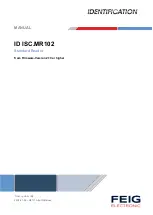
10
Operating notes
Opening the transmitter case
Before opening the transmitter, please check that it is
switched off (move Power switch to “
OFF
”). Slide both
latches inwards as far as they will go, in the opposi-
te direction to the arrows, until the case back can be
folded open and disengaged. To close the transmitter,
engage the bottom edge of the case back, fold the
panel up again and slide both latches outwards in the
direction of the arrows. Take care that no wires get
caught when you close the back.
Notes:
•
Do not modify the transmitter circuit in any
way, as this invalidates your guarantee and also
invalidates offi cial approval for the system.
•
Never touch the circuit boards with any metallic
object. Don’t touch any electrical contacts with
your fi ngers.
•
Whenever you wish to work on the transmitter,
start by disconnecting the transmitter battery
from the transmitter circuit board to avoid the
possibility of short-circuits (see column at far
right).
Power supply
The battery compartment is fi tted as standard with a
high-capacity 9.6 V NiMH battery (8NH-3000 CS, Or-
der No.
3238
– specifi cation may change). However,
this battery is not charged when the transmitter is de-
livered.
When you are using the transmitter you can monitor
the battery voltage on the LCD screen. If the voltage
of the transmitter battery falls below a certain point,
you will hear an audible warning signal. The screen
then displays a message reminding you that the
transmitter battery needs to be recharged:
Charging the transmitter battery
The rechargeable transmitter battery can be charged
via the charge socket fi tted to the side of the case.
The transmitter
must
be switched off and left at
“OFF” for the whole period of the charge process.
Never
switch on the transmitter when it is still
connected to the charger; even a very brief inter-
ruption in the charge process can cause the char-
ge voltage to rise to the point where the transmit-
ter is immediately damaged by the excess vol-
tage. Alternatively the interruption may trigger a
new charge cycle, which means that the battery
will inevitably be totally overcharged.
For this reason check carefully that all connectors are
secure and are making really good contact. Interrup-
tions due to an intermittent contact, no matter how
brief, will inevitably cause the charger to malfunction.
Operating notes
Socket for transmitter battery
Socket for transmitter battery
Batt must
be re-
charged!!
Summary of Contents for MC-22S
Page 1: ...1 mc 22s GB mc 22s 3D Rotary Programming System Programming manual ...
Page 33: ...33 Digital trims ...
Page 55: ...55 Program description Base setup model ...
Page 77: ...77 Program description Flight phases ...
Page 89: ...89 Program description Mixers ...
Page 174: ...174 ...
Page 175: ...175 ...
Page 176: ...176 ...
Page 177: ...177 ...
Page 178: ...178 ...











































